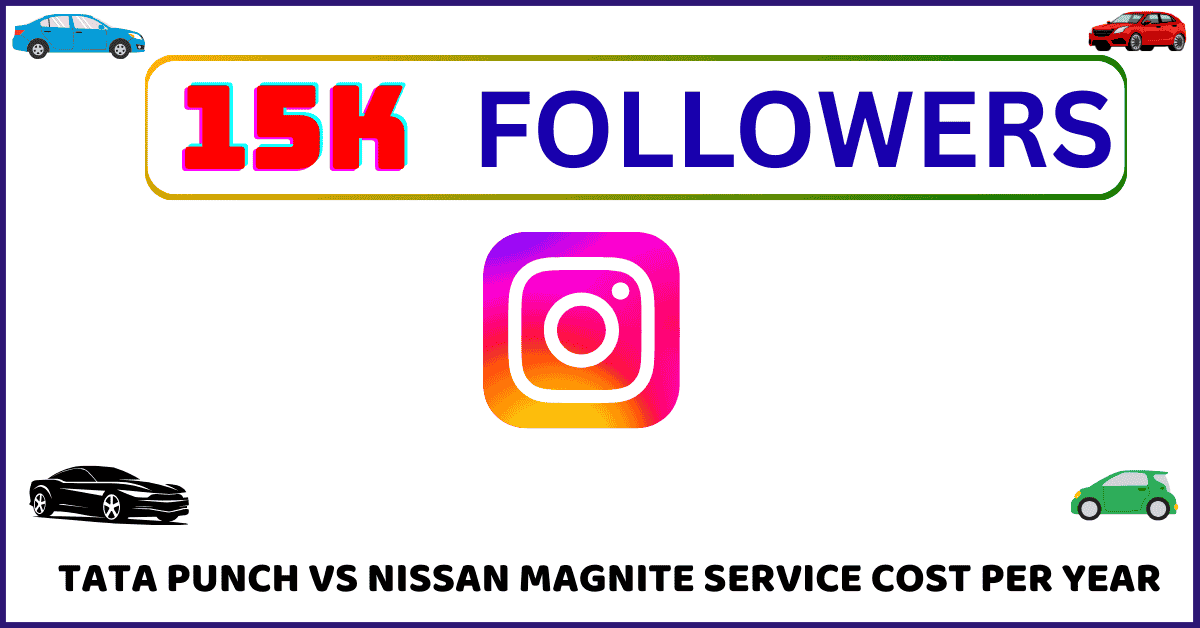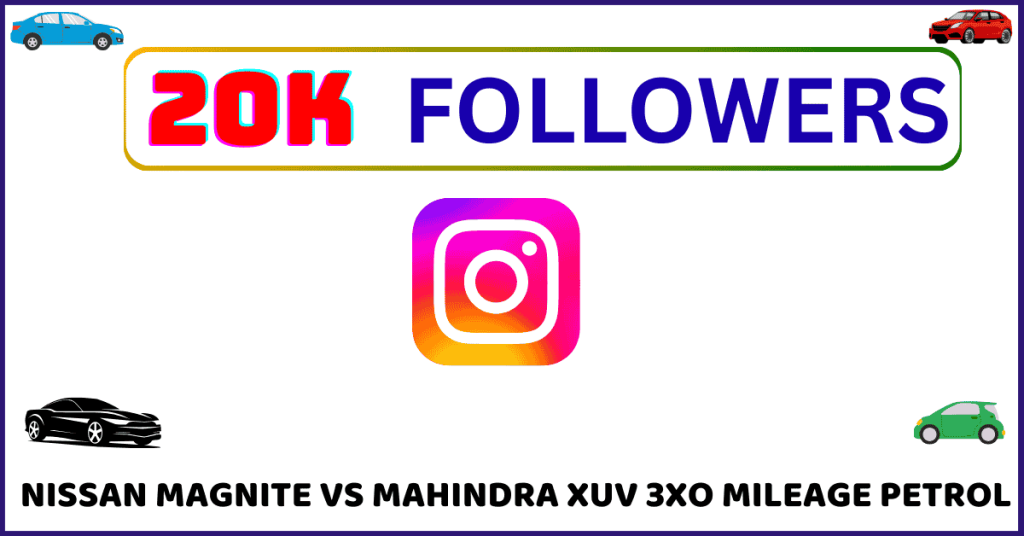When buying a car on loan, the EMI (Equated Monthly Installment) becomes a major component of your monthly outflow. It’s not just about whether you can repay — the EMI dictates how comfortably you can live with the loan.
Some key things to keep in mind:
- Higher variants, extra features, add-ons inflate the on-road price, which increases loan principal and EMI.
- Down payment amount, interest rate, and loan tenure heavily affect EMI.
- Longer tenure lowers EMI but increases total interest paid.
- Loan processing fees, insurance, and registration add to upfront cost (not part of EMI, but part of cash outflow).
So comparing the two cars at the same budget (₹10 lakh) via EMI helps you see which gives you more “value per rupee” in terms of features / variant you can afford under comparable loan burdens.
Price Ranges: Punch & Exter (Under ₹10 Lakh Context)
First, let’s see how much each car costs, to frame realistic EMI comparisons.
Tata Punch Price Range
- According to CarWale, Punch’s ex-showroom price ranges from ₹ 5.50 lakh to ₹ 9.30 lakh for different variants. CarWale
- In many cities, the on-road price (including RTO, insurance etc.) for base variants is ₹ 6.0 lakh+ and for higher variants approaches or slightly exceeds ₹ 9 lakh. CarDekho+1
- In the 2025 Tata official site, the starting (ICE) Punch price begins from ₹ 6.19 lakh in many cities (this may reflect updated prices post tax changes). Tata Motors Cars
So for a ₹10 lakh budget, you can aim for mid to upper Punch variants, possibly with moderate add-ons, while keeping room for registration, insurance, and extras.
Hyundai Exter Price Range
- Hyundai Exter’s ex-showroom price is reported as ₹ 5.68 lakh upward, going up to ~ ₹ 9.61 lakh for top variants. CarWale+1
- In CarTrade’s EMI example, an Ex-variant of Exter with on-road price ~ ₹ 6,72,294 is considered. CarTrade
- In CarDekho’s loan / EMI tool, Exter’s EMI is computed for a loan amount ~ ₹ 5.43 lakh (implying about ~₹ 6–7 lakh on-road car after down payment). CarDekho
Thus, Exter variants also comfortably fit under a ₹10 lakh budget, leaving some wiggle room for add-ons.
Sample EMI Calculations & Comparisons
To make this concrete, I’ll show sample EMI numbers for Punch and Exter under typical loan assumptions.
Assumptions for EMI Calculations
Let’s pick a common set of financing assumptions to compare apples to apples:
- Loan interest rate: 8.0% to 10.5% per annum (typical car loan rates)
- Tenure: 60 months (5 years) — a common choice for car buyers
- Down payment: 20% of on-road price (i.e. you pay 20% upfront, loan covers 80%)
- Loan principal = 80% of total on-road price
These are simplified; actual offers may vary depending on your credit, city, bank, etc.
Example EMI for Hyundai Exter
From CarTrade example:
- On-road price: ₹ 6,72,294 for Exter EX 1.2 MT variant
- Down payment: ₹ 1,04,261 (approx 15-20%)
- Loan amount: ₹ 5,68,033
- EMI (for 60-month tenure, interest ~8%) = ₹ 11,518 / month CarTrade
From other sources:
- Drivespark shows EMI ~ ₹ 11,456 / month for Exter under similar assumptions (loan ~ 80% of price, 5 years) drivespark.com
- 91Wheels gives projected EMI ~ ₹ 11,076 / month for a loan of ₹ 5.40 lakh at 8.5% interest over 60 months 91Wheels
So, for Exter under moderate variant, the monthly EMI lands in the range ₹ 11,000 to ₹ 12,000 approximately.
Example EMI for Tata Punch
We don’t have as many direct published EMI examples in the sources I found, but we can infer from its price range.
Let’s assume:
- A mid-variant Punch has on-road price ≈ ₹ 7,50,000 (i.e. ₹ 7.5 lakh)
- Down payment: 20% → ₹ 1,50,000
- Loan principal: ₹ 6,00,000
- Rate: 9% per annum, 60 months tenure
Using standard EMI formula, EMI=P×r×(1+r)n(1+r)n−1\text{EMI} = \frac{P \times r \times (1+r)^n}{(1+r)^n – 1}EMI=(1+r)n−1P×r×(1+r)n
Where P=600,000 P = 600,000P=600,000, r=9%12=0.0075 r = \frac{9\%}{12} = 0.0075r=129%=0.0075, n=60n = 60n=60.
Quick approximate EMI comes to ₹ 12,300 to ₹ 13,000 / month for that setup.
If you choose a lower variant (say on-road ~ ₹ 6,50,000), with 20% down payment, loan ~ ₹ 5,20,000, that EMI might drop ~ ₹ 10,500–₹ 11,500 depending on rate.
So Punch’s EMI will tend to be somewhat higher than Exter’s for similar trims, because its price / variant chosen might be a bit higher or features cost more.
Side-by-Side: What EMI You Can Expect Under ₹10 Lakh Budget
Let’s imagine two scenarios under the constraint “total cost ≤ ₹ 10,00,000 (on-road)”. We’ll see which variant you can pick and what EMI burden you’d carry:
| Scenario | Car / Variant | On-Road Price | Down Payment (20%) | Loan Amount | Estimated EMI (60 months) |
|---|---|---|---|---|---|
| Scenario A | Hyundai Exter (mid variant) | ₹ 6,70,000 | ₹ 1,34,000 | ₹ 5,36,000 | ~ ₹ 10,900 – ₹ 11,500 |
| Scenario B | Tata Punch (mid variant) | ₹ 7,50,000 | ₹ 1,50,000 | ₹ 6,00,000 | ~ ₹ 12,300 – ₹ 13,000 |
From this rough comparison, under a ₹ 10 lakh budget, Exter gives you room to choose a variant with lower EMI, or you can push for a higher variant and still keep EMI manageable. Punch is likely to demand a higher EMI for comparable features / trims.
So Exter has an edge in EMI flexibility under the same budget ceiling.
Factors That Shift the Balance
While EMI numbers give a baseline, here are factors that might tilt the comparison one way or another:
- Interest Rate / Bank Offer
If you (for some reason) get a lower interest rate on Punch (promotional offer, better credit), Punch’s EMI disadvantage shrinks. - Down Payment Capacity
If you can make a higher down payment, EMI burden falls proportionally. For example, 30% down vs 20% down makes a noticeable difference. - Tenure Choice
You may choose 7-year (84 months) for lower EMI — but you’ll pay more interest overall. If Exter’s EMI is already comfortable at 5 years, you may avoid extending tenure. Punch buyer may feel more pressure to extend tenure, increasing total cost. - Trim / Features / Add-ons
Choosing a high-end variant (sunroof, premium features) adds to on-road cost, raising principal and EMI. Pick trims wisely according to your budget comfort zone. - Processing / Other Fees
There might be loan processing fees, prepayment penalties, insurance premium portion, accessories cost etc. These upfront costs affect your effective EMI burden. - Residual / resale / resale financing
After 3–4 years, car’s resale value and ease of refinancing matters. A car with stronger resale might reduce your net cost over term.
Tips to Optimize EMI and Select the Right Variant
- Don’t stretch to the highest trim if EMI becomes burdensome — better to lock in a variant you can comfortably service.
- Try to make a larger down payment if possible — it reduces loan principal and interest burden.
- See if the manufacturer / bank offers promotional or subsidized interest rates.
- Watch out for tenure — 5 years is standard; going for 6–7 year tenure reduces EMI but inflates total interest.
- Check if the variant you want has many optional / costly accessories — these increase principal.
- Use online EMI calculators (many automakers / portals provide) to plug in your own numbers and see what is feasible.
For example, CarDekho has an EMI tool for Exter: they show EMI ~ ₹ 13,736 / month for a loan of ₹ 5.43 lakh over 60 months at ~9.8% interest. CarDekho
Conclusion & Recommendation
- Under a ₹ 10 lakh budget, Hyundai Exter tends to give a more favorable EMI profile (i.e. lower monthly burden for a reasonably equipped variant) compared to Tata Punch, assuming similar down payment / interest conditions.
- Punch is a strong car and may offer features / brand advantage, but you will likely pay a higher EMI for similar specification.
- If your priority is lower monthly cash outflow and budget stability, Exter gives more wiggle room.
- But always plug in your own numbers (interest rate offered to you, your down payment capacity, variant cost) into an EMI calculator before committing.





